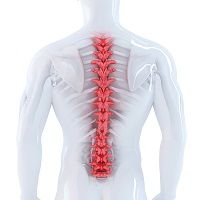Article
Discovering the Reparative and Destructive Qualities of Macrophages in Spinal Cord Injuries
Author(s):
Macrophages – the cells that warn of attacks from viruses, bacteria, or fungi work double duty in spinal cord injuries to promote cell repair as well as perform pathological functions.

Macrophages — the cells that warn of attacks from viruses, bacteria, or fungi ‑ work double duty in spinal cord injuries to promote cell repair as well as pathological functions, according to research published in The Journal of Neuroscience.
“We know from previous research that macrophages are versatile, and signals at the injury site can stimulate repair or destruction — or confusingly, both,” John Gensel PhD, Assistant Professor of Physiology in the Spinal Cord and Brain Injury Research Center at the University of Kentucky, explained in a press release. “But the mechanisms through which these signals stimulate the good and/ or bad functions in macrophages are not known. So the next big question to answer in the efforts to understand and treat spinal cord injury was, ‘Why?’”
Researchers from Vanderbilt University explored underlying mechanisms in macrophages in order to determine the in vivo consequences of activating the receptors following spinal cord injuries. More than 50 in vivo and in vitro animal models of spinal cord injury were used in the analysis. Researchers aimed to identify particularly which macrophage receptors promoted neuronal regeneration and repair, as well as those which mitigated the destructive processes.
“We found that activating bacterial receptors boosted the macrophage response and limited damage to the spinal cord following injury, while activating fungal receptors actually contributed to pathology,” Gensel continued.
The researchers warned that the results of the study may glaze what is actually quite a complex process. Macrophages are responsible for the repair and destruction of neuronal tissues, thoug it is still not understood why. The results do demonstrate, however, that opportunities to understand, control, and redirect macrophage responses after a spinal cord injury may be possible in the future. If so, the damage and side effects from spinal cord injury may one day be able to be reversed.
“The implications are exciting,” Gensel concluded. “We now can look for treatments targeted to the receptors that jump start the macrophages’ restorative effects without activating the receptors that modulate the destructive processes in that same cell.”
Additionally, the researchers commented that their research pointed them in the direction of two innate immune receptor subtypes, bacterial toll like receptors (TLRs) and fungal C type lectin receptors (such as dectin-1). The investigators believe these two subtypes are involved in the developmental processes too and can become activated in macrophages that respond to various neurological diseases.




